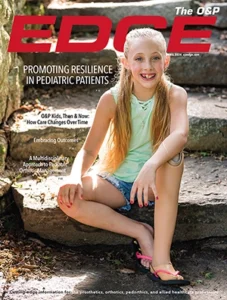As the O&P profession has changed over the years, so too has its fabrication elements. What was once performed by clinicians, who often learned their skills though mentorship, has for many practices shifted to technicians, often at central fabrication facilities off-site. While much of practitioner education focuses on the patient care aspect of practice, practitioners’ fabrication knowledge and skill remain relevant. The change in business models means that in addition to acquiring fundamental fabrication skills, it is essential that practitioners know how to communicate clearly with their technician partners about materials and device specifications.
“O&P Fabrication Education: Current Trends” explores the way in which teaching hand skills in O&P has evolved with the entry-level master’s degree requirement for clinicians. Demographics show a shift in the number of women entering the field, as well as students who may not have previous experience using the tools needed for O&P fabrication. In addition to teaching familiarity and safety with the tools and the hands-on fabrication skills, instructors must also teach materials selection theory. While curricular time constraints and prerequisite experience can present challenges, this article urges educators to provide adequate lab time for students to develop their competencies and to clearly understand the skills technicians need so each team member can produce and deliver quality outcomes for patients.
Support authors and subscribe to content
This is premium stuff. Subscribe to read the entire article.




